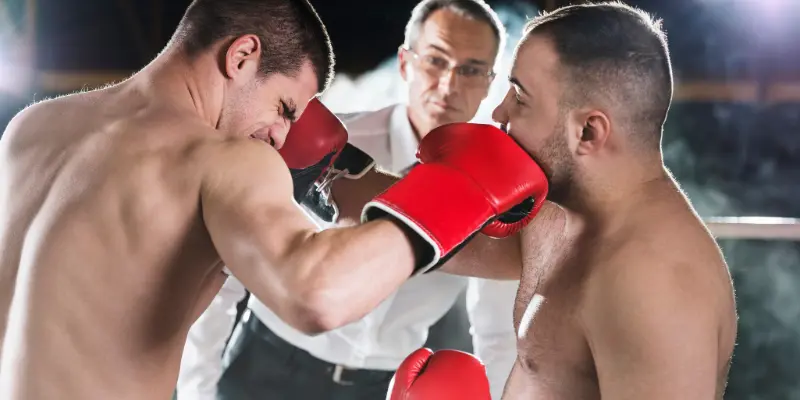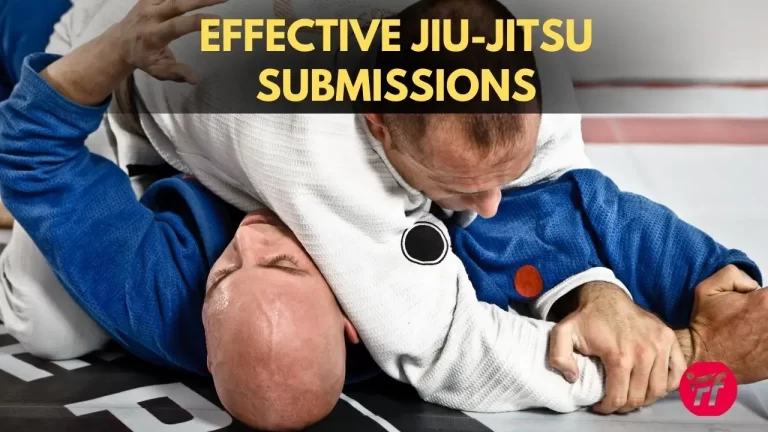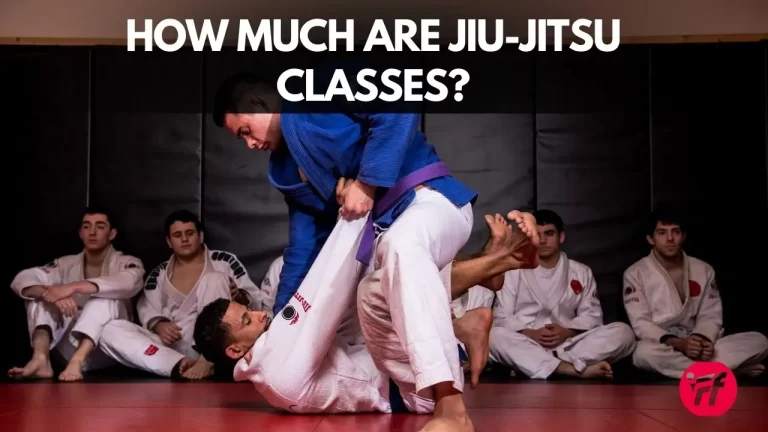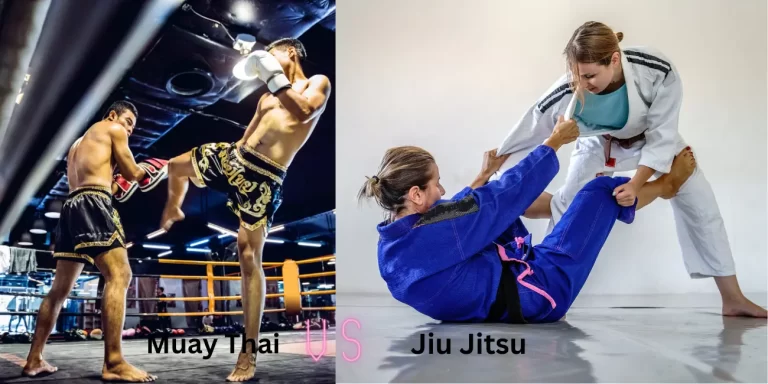17 BJJ Rules For Beginners (Must Read)
Let’s start at the BJJ Rules For Beginners. The IBJJF stands for the International Brazilian Jiu-Jitsu Federation. Brazilian Jiu-Jitsu (BJJ) is a martial art about controlling and submitting opponents through techniques, not strength. It is all about wrestling and using technique to make your opponent give up. It is guided by the people associated with Gracie Barra, one of the largest BJJ teams. These individuals are the direct children of Carlos Gracie, especially his son, Carlos Gracie Jr.
This family connection is important in understanding the rules of BJJ. The Gracies are known for their strong confidence and have a particular style of Jiu-Jitsu, often referred to as Gracie Jiu-Jitsu, that they like to promote. They were creating suitable organizations like Gracie Barra and the IBJJF, which was the first to organize BJJ tournaments.
When you are preparing for your first BJJ competition, understanding the basic point system is important, and delving into all the complex details can be overwhelming. To make it easier for beginners, let’s go over the rules of BJJ today in a beginner-friendly way. Remember, we all had to learn the rules at some point, but you don’t need to take the more complex route right away. In this article we will cover all about the BJJ rules for beginners.
17 BJJ Rules For Beginners
To keep things simple, there are two main sets of BJJ rules. The first set applies to Brazilian Jiu-Jitsu with the Gi, while the second set is for No-Gi BJJ. It’s important to understand that these rulesets belong to different organizations, which is why there are significant differences in their concepts.
Currently, BJJ lacks a unified governing body so different tournaments can use various rules. Before starting the game hold your Motivational Water Bottles and ready for class.
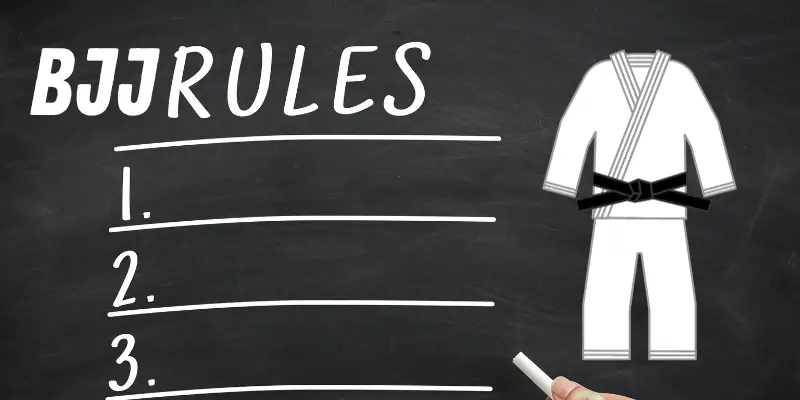
However, two organizations have significant influence, and we will focus on what’s most commonly accepted. These rules are the IBJJF rules and the ADCC rules. There are 17 rules for the beginners for BJJ. You can check them before starting.
1. Pulling Guard vs. Guard = Sweep
Passing an opponent’s guard can be a bit tricky. If you try to pull them into your guard and they end up on top, they’ll earn 2 points for a sweep. Even if you fall back for a foot lock but they escape and stay on top, they still get 2 points. So, it’s a good idea to either be the first one to pull guard or, even better, aim to pass their guard and take the top position. Even if you attempt a foot lock and the opponent escapes, you’ll lose 2 points if they stay on top.

So, it’s crucial to pull guard first or, even better, focus on passing their guard and mounting them to gain points and an advantage.
2. Do Not Object On Referee’s Decisions
In BJJ, regardless of your belt rank, you can’t argue with the referee. Unlike before, when fighters would dispute referee decisions, BJJ now treats the referee’s call as final. Even the IBJJF considers it a serious foul and allows referees to penalize fighters who argue with them. The referee’s decision is ultimate.In the past, you could discuss things with a referee and maybe change their decision. But those days are gone. Nowadays, if you talk to the referee during your match, you will get punished. So, it’s best not to voice any objections about points. Instead, just shake the referee’s hand at the beginning of the match and let your jiu jitsu skills do the talking. In BJJ, accept the referee’s point decisions without arguing.
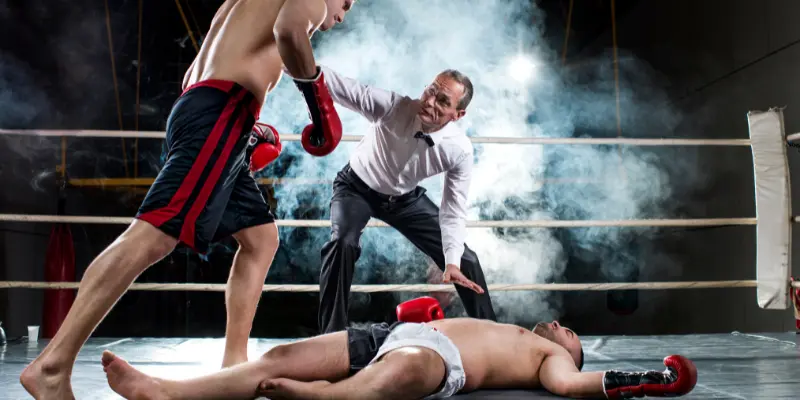
Let your jiu jitsu skills speak for themselves and persuade the referees to make favorable calls.
3. Disqualification Before Stepping on the Mat
Before you even start a BJJ match, you have to pass some tests. First, you need to make sure you weigh the correct amount while wearing your kimono (gi). If your weight is off, your day in the tournament is over. Additionally, your GI is inspected. It should be blue, white, or black. If it’s a different color or has tears or embroidery in the wrong places, you’ll need to replace it. If the gi is too tight, like a scuba-diving suit, it needs to be replaced as well. If you can’t make these corrections, you may be disqualified.
4. Avoid Stalling, Except from a Top Position
In IBJJF, stalling after scoring points is not allowed. While it might be tempting to run out the clock, doing so can result in penalties. If you get four stalling penalties, you face disqualification.
After you’ve earned some points, it can be tempting to play it safe and wait for the clock to run out. But in IBJJF events, if you’re seen as stalling, you can get penalties, and if you get four of them, you will be disqualified. You can only take it easy once you have reached the mount or the opponent’s back. Once you’re at the top, it is okay to stay put because there’s no higher position to aim for.
5. Time Limit for Re-Tying Belt
If your belt accidentally comes loose during a BJJ match, don’t stop the fight or ask the referee for help. Only Keep on competing. Only when the referee signals can you pause to put your belt back on. You will have just twenty seconds to do so, and if you take longer, you could receive a penalty.
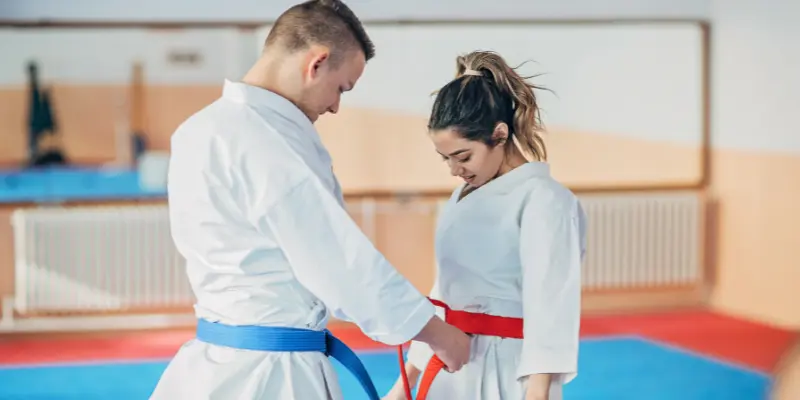
It is important to be fast when fixing your belt, but always wait for the referee’s instructions. Don’t interrupt the match on your own, and remember to keep the action going.
6. No Leaving the Mat to Escape Submissions
A few years back, in the World Championships, there was a memorable moment when Abraham Marte was seen in a triangle by Rodrigo Cavaca. Instead of trying to escape, Marte calmly picked up Cavaca and walked off the mat. Sadly, this was against the rules, and he got disqualified. If you accidentally go off the mat while escaping a submission, your opponent earns 2 points, and the match restarts standing. But deliberately leaving the mat while trapped in submission doesn’t work, and the referee won’t rescue you from it; it’s not allowed in BJJ.
7. Sweeps Involve Leg Use
If you use a bridge and roll to escape when your opponent has you in the mount, it’s a smart move, but it doesn’t earn you sweep points in BJJ. To score points for sweeps, you need to start from the guard or half-guard position. When your opponent has already passed your guard, and you reverse the situation, it’s called a reversal, not a sweep. So, if you’re trapped under the mount, side control, knee-on-belly, or north/south position, these turnovers won’t get you any points, even though they might feel like a small victory. Points in BJJ are all about improving your position.
8. Countering a Sweep Differs from a Throw
In BJJ, there are moments when you’ll have to stand up to finish a sweep, but your opponent might try to throw you back down. Here’s the catch: if you end up back in your guard, you won’t get any points, no matter how fancy the throw looks. BJJ is all about rewarding progress and improving your position, not just changing the situation to where it began. So, even if your opponent reverses your move and puts you back on your guard, it doesn’t count as a successful sweep. Points are about moving forward and gaining better control over your opponent, not going in circles.
9. No Points for Side Control
In BJJ, some positions like the mount and knee-on-belly are point earners. If you throw your opponent or pass their guard and then get into one of these positions, you get points both for the throw or pass and for the new position. But here’s the twist: when you’re in side control, you don’t get extra points just for being there. If you manage to reach side control, you’ll still earn points for the initial pass or throw, but side control itself doesn’t bring any extra scoring. So, focus on those mounts and knee-on-belly positions if you want more points in a BJJ match.
10. Slamming Is Prohibited
In IBJJF competitions, all kinds of slams are not allowed. You can’t lift your opponent and slam them, whether from closed guard, the back, or when they’re in an armbar. Doing so will lead to immediate disqualification.
You might really respect Alexander Karelin, who’s known for lifting people and slamming them like meteors. But in BJJ, like the IBJJF rules, you can’t do those slams.
If you find yourself caught in an armbar or triangle, you need to escape without doing anything like what “Rampage” Jackson did to Ricardo Arona. Slamming or spiking someone on their head is not allowed. Think of Jake “The Snake” Roberts, a pro wrestler who used the DDT move by dropping people on their heads. As much as you might like the memory, that’s against the rules in IBJJF events.
From white belts to black belts, nobody is allowed to slam opponents in IBJJF events. They have strict rules against slamming, and spiking an opponent’s head is also prohibited in BJJ competitions.
11. Taking the Back Differs from Guard Passing

Passing someone’s guard means transitioning from being between their legs to a position where you’re no longer trapped by their legs, and you’re pinning them flat on their back. This typically includes side control, mount, knee-on-belly, or North/South. While moving to their back is a strong position, you won’t earn points specifically for passing. If you manage to get your hooks in on their back, you’ll receive 4 points. However, you won’t get these points if your feet are crossed, or your legs are in a triangle around them.
12. Certain Throws Are Restricted
In BJJ competitions, not all throws are allowed. Some throws that work in MMA, wrestling, or judo are prohibited. These include moves like the flying scissor throw, also called kani basami, and suplexes that can slam your opponent’s head to the ground. These restrictions are in place to provide safety in BJJ matches. While these throws might be effective in other sports, they pose a risk of serious injury in the BJJ setting. So, to keep the competition safe and focused on grappling skills, these particular throws are not allowed in BJJ events.
13. Different Rules for Kids and Lower Belts
In BJJ competitions, the rules and allowed techniques can vary depending on your age and belt rank. Typically, the younger you are and the lower your belt rank, the fewer techniques you are permitted to use. For example, white and blue belts are often not allowed to use techniques like bicep slicers, calf slicers, kneebars, or toe holds. These restrictions are in place to prioritize safety, especially for less experienced practitioners.
For kids in BJJ, regardless of their belt levels, certain techniques are not allowed. These include guillotine chokes, omoplatas, and Eziquiels. Disqualifying a child in a match is something no one wants to see, so it’s crucial for parents and instructors to educate young practitioners about which techniques are permitted and which are not to ensure a safe and enjoyable experience for everyone.
14. Neck Cranks Prohibited
A famous fight between Mark Coleman and Dan Severn involved a brutal neck crank, which left a lasting memory. However, it’s important to know that this fight happened in the UFC, not BJJ. In IBJJF events, performing a neck crank like that results in disqualification because neck cranks are only acceptable when part of a choke, not as a standalone move. In simple terms, in BJJ, you can’t use neck cranks to submit your opponent.

This rule prioritizes safety and ensures that submissions are applied correctly, focusing on chokes rather than cranking the neck forcefully.
15. No “Reaping” Allowed for Opponent’s Leg
Under IBJJF rules, bending your opponent’s leg inwards is prohibited, as it can put pressure on the knee, similar to a heel hook, which is also a very illegal move. So, if you intend to attack your opponent’s leg, ensure that it is either straight or bent outward, but avoid bending it inward. Additionally, pushing your opponent’s feet to make it seem like they are reaping your leg is also against the rules and should be avoided. It is important to know the rules and prioritize safety in BJJ competitions.
16. Consider Advantages, Points, and Penalties
In BJJ, if you’re ahead on points, there’s often no urgency to submit your opponent. Conversely, when you’re behind on points, you may find yourself in a position where submissions are less available. That’s why, in IBJJF events, many matches are determined by points, so it’s crucial not to disregard the score. It’s also essential to understand how to read the scoreboard, as it’s a straightforward way to keep track of your progress in the match and make strategic decisions accordingly.
When the points are tied in a BJJ match, the referee checks for “advantages.” You earn advantages for nearly scoring points or almost getting a submission. If the number of advantages is the same for both competitors, the referee then looks at any penalties. If penalties are also equal, the referee will make a decision based on who came closest to scoring an advantage during the match.
17. Passing the Guard Requirement
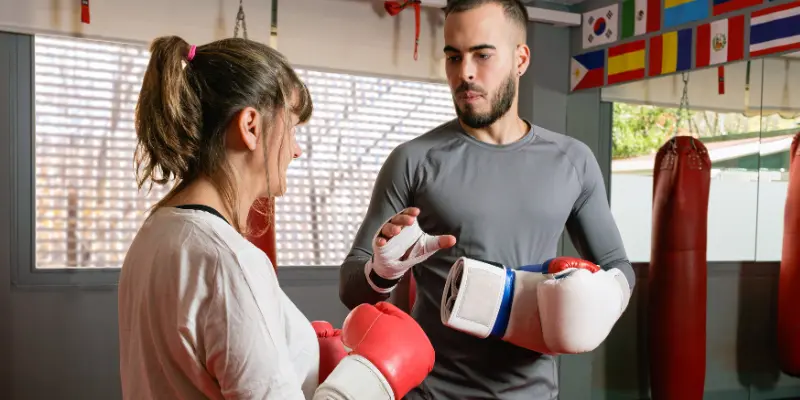
In mixed martial arts (MMA), if your opponent sits down, you can often back up, and the referee will instruct them to get up, allowing you to engage and potentially knock them down again. However, in IBJJF rules for Brazilian Jiu-Jitsu, backing away from your opponent’s guard is not allowed, and you may receive penalties for doing so. In BJJ, it’s your responsibility to work on passing your opponent’s guard and not their job to stand up and take you down, which is an important distinction from MMA.
Final Words
In conclusion, as beginners step onto the mats in the world of Brazilian Jiu-Jitsu, the rules can seem like a complex puzzle. But remember, every BJJ practitioner once stood where you do now. Focus on the basics, and gradually, the rules will become clearer. Don’t feel overwhelmed by the nuances. Include the learning process, and enjoy your BJJ journey.
It’s about more than just points and regulations, it is a path to self-improvement, discipline, and camaraderie. So, take one step at a time, train hard, and savor the experience both on and off the mats. Your understanding of BJJ will grow with time and practice. In this post, we covered all about the BJJ Rules for beginners.
FAQs
1. What is Brazilian Jiu-Jitsu (BJJ)?
BJJ is a martial art that focuses on ground fighting and using techniques to control and submit opponents. It’s all about using leverage and technique, not strength.
2. How long does it take to get a black belt in BJJ?
Getting a black belt in BJJ can take many years of dedicated training and hard work. It’s not about how fast you can earn it but how well you learn and apply the techniques.
3. Are there weight classes in BJJ tournaments?
Yes, BJJ tournaments often have weight classes to ensure fair competition. You will compete against others who are close to your weight.
4. Is BJJ safe for kids to learn?
BJJ can be safe for kids when taught by qualified instructors who focus on safety and technique. Kids need to wear the right gear and follow the rules.
5. Do I need to be fit to start BJJ?
No, you don’t need to be super fit to start BJJ. It’s a great way to get in shape and improve your fitness, no matter your starting point. Just be willing to learn and work hard.

